Fisher–Shannon Complexity Analysis of High-Frequency Urban Wind Speed Time Series
Abstract
1. Introduction
2. Description of the Experiment
3. The Fisher–Shannon Analysis
4. Results and Discussion
5. Conclusions
Author Contributions
Funding
Acknowledgments
Conflicts of Interest
Abbreviations
| An | Anemometer |
| FS | Fisher–Shannon |
| FIM | Fisher Information Measure |
| SEP | Shannon Entropy Power |
| probability density function | |
| EPFL | Ecole Polytechnique Fédérale de Lausanne |
References
- Mauree, D.; Coccolo, S.; Kaempf, J.; Scartezzini, J.L. Multi-scale modelling to evaluate building energy consumption at the neighbourhood scale. PLoS ONE 2017, 12, e0183437. [Google Scholar] [CrossRef] [PubMed]
- Mauree, D.; Coccolo, S.; Perera, A.T.D.; Nik, V.; Scartezzini, J.L.; Naboni, E. A New Framework to Evaluate Urban Design Using Urban Microclimatic Modeling in Future Climatic Conditions. Sustainability 2018, 10, 1134. [Google Scholar] [CrossRef]
- Perera, A.; Coccolo, S.; Scartezzini, J.L.; Mauree, D. Quantifying the impact of urban climate by extending the boundaries of urban energy system modeling. Appl. Energy 2018, 222, 847–860. [Google Scholar] [CrossRef]
- Stull, R.B. An Introduction to Boundary Layer Meteorology; Kluwer Academic Publishers: Dordrecht, The Netherlands, 1988; p. 670. [Google Scholar]
- Oke, T.R.; Mills, G.; Christen, A.; Voogt, J. Urban Climates; Cambridge University Press: Cambridge, UK, 2017. [Google Scholar]
- Rotach, M.W.; Vogt, R.; Bernhofer, C.; Batchvarova, E.; Christen, A.; Clappier, A.; Feddersen, B.; Gryning, S.E.; Martucci, G.; Mayer, H.; et al. BUBBLE—An Urban Boundary Layer Meteorology Project. Theor. Appl. Climatol. 2005, 81, 231–261. [Google Scholar] [CrossRef]
- Mauree, D.; Blond, N.; Kohler, M.; Clappier, A. On the Coherence in the Boundary Layer: Development of a Canopy Interface Model. Front. Earth Sci. 2017, 4, 109. [Google Scholar] [CrossRef]
- Järvi, L.; Rannik, U.; Kokkonen, T.V.; Kurppa, M.; Karppinen, A.; Kouznetsov, R.D.; Rantala, P.; Vesala, T.; Wood, C.R. Uncertainty of eddy covariance flux measurements over an urban area based on two towers. Atmos.Meas. Tech. Discuss. 2018, 11, 5421–5438. [Google Scholar] [CrossRef]
- Santiago, J.L.; Martilli, A.; Martín, F. CFD simulation of airflow over a regular array of cubes. Part I: Three-dimensional simulation of the flow and validation with wind-tunnel measurements. Bound.-Layer Meteorol. 2007, 122, 609–634. [Google Scholar] [CrossRef]
- Christen, A.; Rotach, M.W.; Vogt, R. The Budget of Turbulent Kinetic Energy in the Urban Roughness Sublayer. Bound.-Layer Meteorol. 2009, 131, 193–222. [Google Scholar] [CrossRef]
- Mauree, D.; Lee, D.S.H.; Naboni, E.; Coccolo, S.; Scartezzini, J.L. Localized meteorological variables influence at the early design stage. Energy Procedia 2017, 122, 325–330. [Google Scholar] [CrossRef]
- Mauree, D.; Deschamps, L.; Bequelin, P.; Loesch, P.; Scartezzini, J.L. Measurement of the impact of buildings on meteorological variables. In Building Simulation Application Proceedings; Bu Press: Bolzano, Italy, 2017. [Google Scholar]
- Vignat, C.; Bercher, J.F. Analysis of signals in the Fisher–Shannon information plane. Phys. Lett. A 2003, 312, 27–33. [Google Scholar] [CrossRef]
- Esquivel, R.O.; Angulo, J.C.; Antolín, J.; Dehesa, J.S.; López-Rosa, S.; Flores-Gallegos, N. Analysis of complexity measures and information planes of selected molecules in position and momentum spaces. Phys. Chem. Chem. Phys. 2010, 12, 7108–7116. [Google Scholar] [CrossRef] [PubMed]
- Telesca, L.; Lovallo, M. Analysis of the time dynamics in wind records by means of multifractal detrended fluctuation analysis and the Fisher–Shannon information plane. J. Stat. Mech. Theory Exp. 2011, 2011, P07001. [Google Scholar] [CrossRef]
- Telesca, L.; Lovallo, M. Fisher–Shannon Analysis of Wind Records. Int. J. Energy Stat. 2013, 1, 281–290. [Google Scholar] [CrossRef]
- Rotach, M.W. On the influence of the urban roughness sublayer on turbulence and dispersion. Atmos. Environ. 1999, 33, 4001–4008. [Google Scholar] [CrossRef]
- Kaimal, J.C.; Finnigan, J.J. Atmospheric Boundary Layer Flows: Their Structure and Measurement; Oxford University Press: Oxford, UK, 1994. [Google Scholar]
- Parzen, E. On Estimation of a Probability Density Function and Mode. Ann. Math. Stat. 1962, 33, 1065–1076. [Google Scholar] [CrossRef]
- Rosenblatt, M. Remarks on Some Nonparametric Estimates of a Density Function. Ann. Math. Stat. 1956, 27, 832–837. [Google Scholar] [CrossRef]
- Cover, T.M.; Thomas, J.A. Elements of Information Theory; Wiley Series in Telecommunications and Signal Processing; Wiley-Interscience: New York, NY, USA, 2006. [Google Scholar]
- Shannon, C.E. A Mathematical Theory of Communication. Bell Syst. Tech. J. 1948, 27, 379–423. [Google Scholar] [CrossRef]
- Devroye, L. A Course in Density Estimation; Birkhauser Boston Inc.: Cambridge, MA, USA, 1987. [Google Scholar]
- Troudi, M.; Alimi, A.M.; Saoudi, S. Analytical Plug-in Method for Kernel Density Estimator Applied to Genetic Neutrality Study. EURASIP J. Adv. Signal Process 2008, 2008, 156. [Google Scholar] [CrossRef]
- Raykar, V.; Duraiswami, R. Fast optimal bandwidth selection for kernel density estimation. In Proceedings of the Sixth SIAM International Conference on Data Mining, Bethesda, MD, USA, 20–22 April 2006; pp. 524–528. [Google Scholar]
- Telesca, L.; Lovallo, M. On the performance of Fisher Information Measure and Shannon entropy estimators. Phys. A Stat. Mech. Appl. 2017, 484, 569–576. [Google Scholar] [CrossRef]
- Angulo, J.; Antolín, J.; Sen, K. Fisher–Shannon plane and statistical complexity of atoms. Phys. Lett. A 2008, 372, 670–674. [Google Scholar] [CrossRef]
- Dembo, A.; Cover, T.M.; Thomas, J.A. Information theoretic inequalities. IEEE Trans. Inf. Theory 1991, 37, 1501–1518. [Google Scholar] [CrossRef]
- Coceal, O.; Belcher, S.E. A canopy model of mean winds through urban areas. Q. J. R. Meteorol. Soc. 2004, 130, 1349–1372. [Google Scholar] [CrossRef]
- Christen, A.; van Gorsel, E.; Vogt, R. Coherent structures in urban roughness sublayer turbulence. Int. J. Climatol. 2007, 27, 1955–1968. [Google Scholar] [CrossRef]
- Davison, A.C.; Hinkley, D.V. Bootstrap Methods and their Application; Cambridge Series in Statistical and Probabilistic Mathematics; Cambridge University Press: Cambridge, UK, 1997. [Google Scholar]
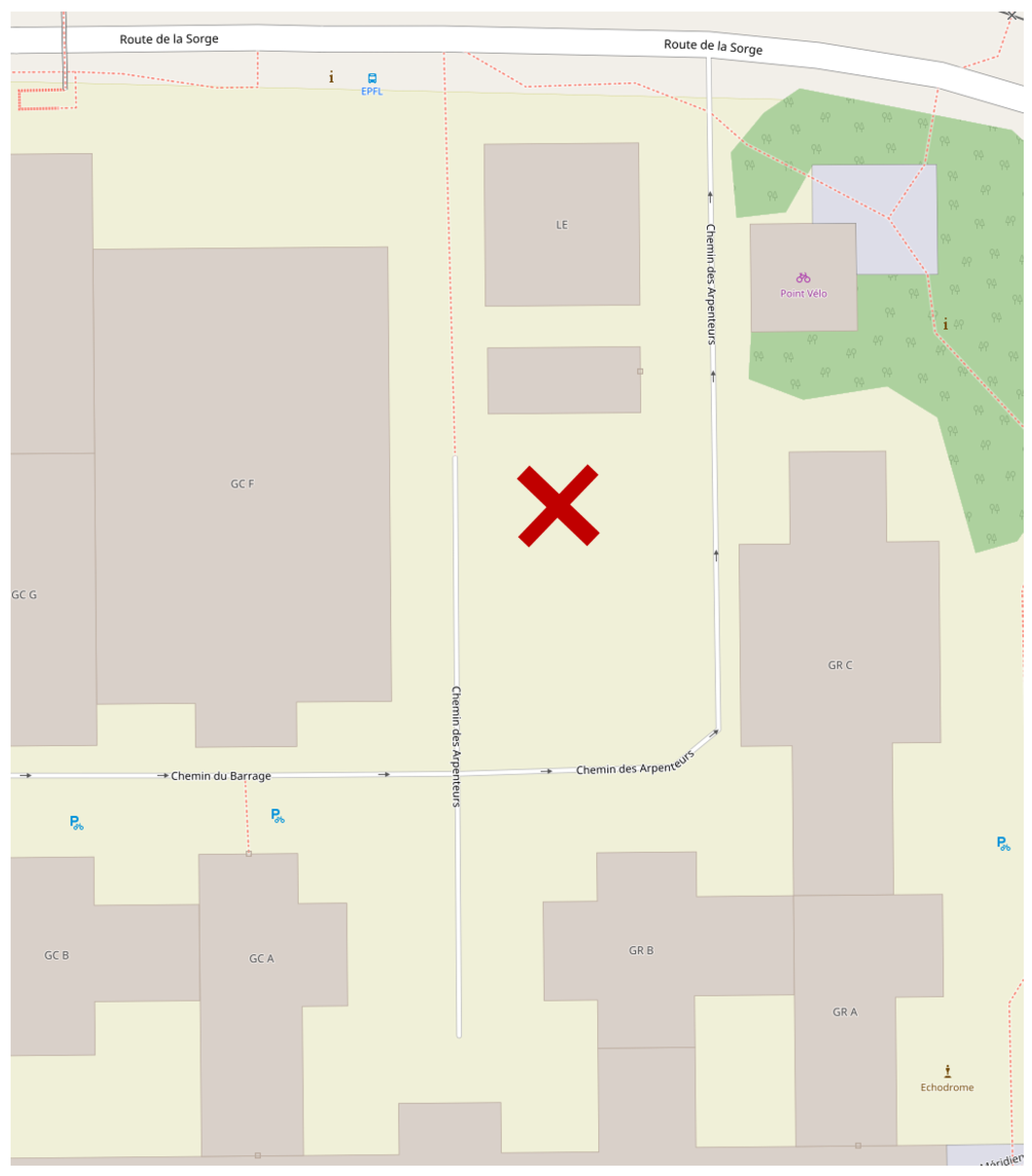
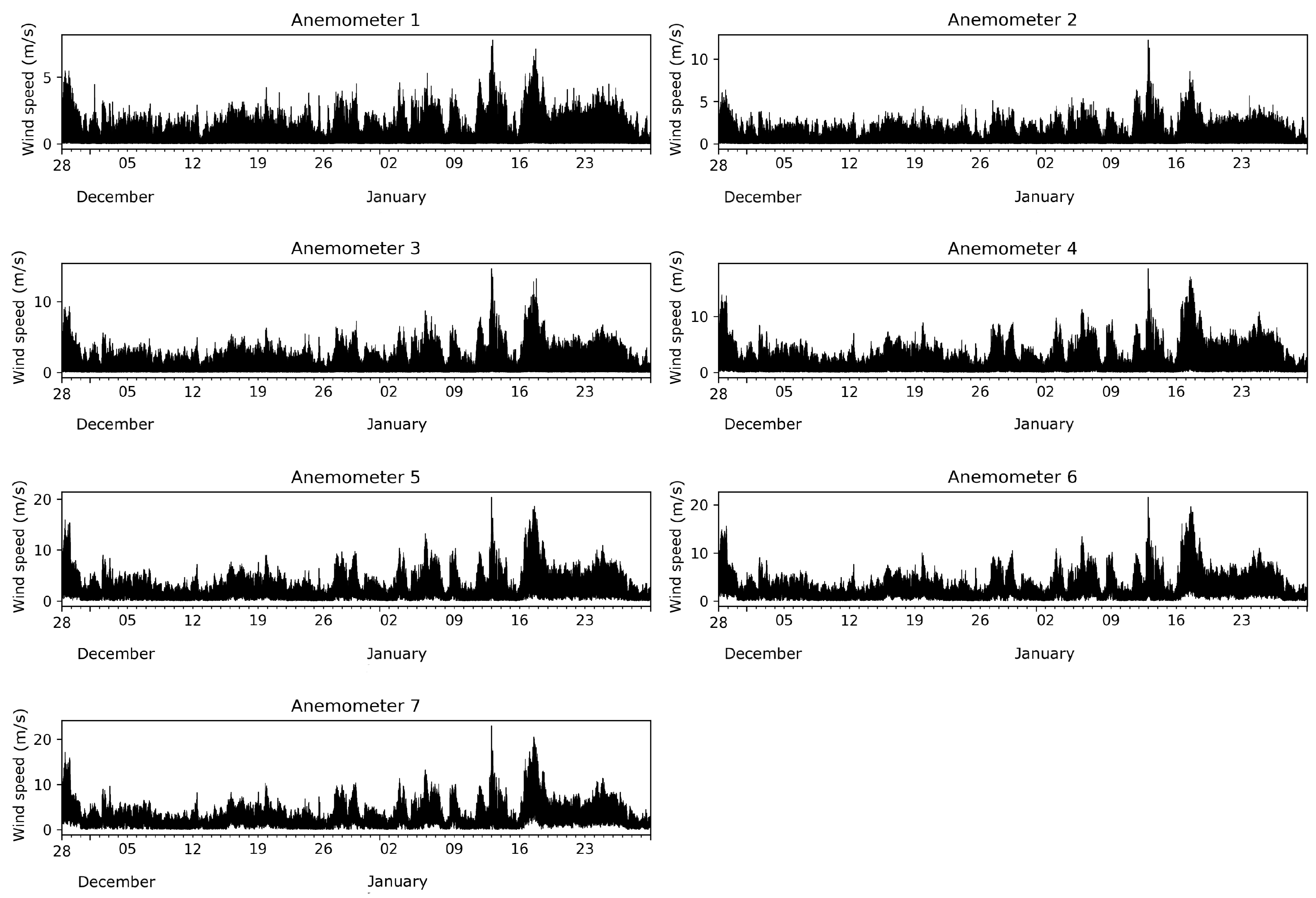
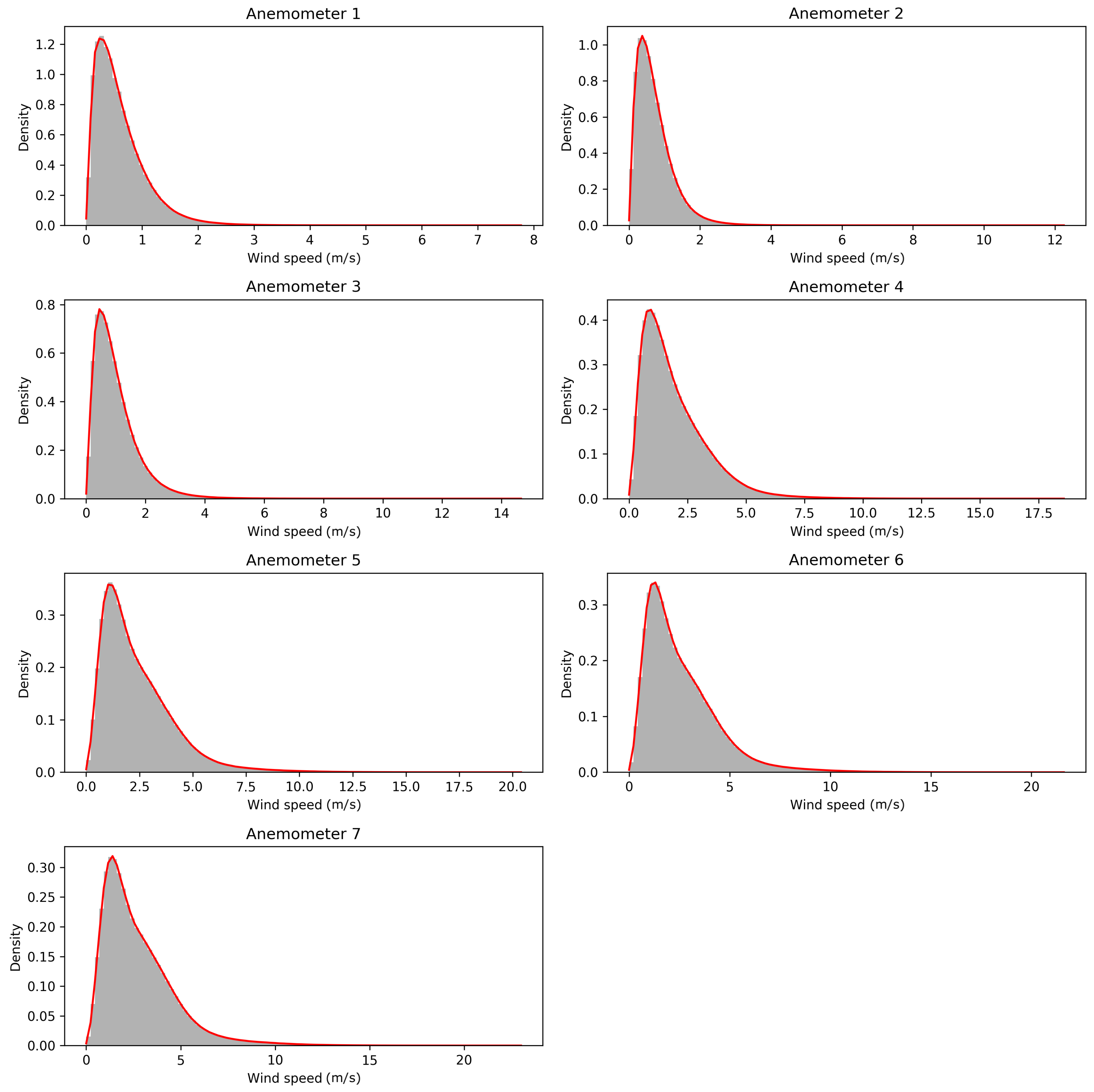
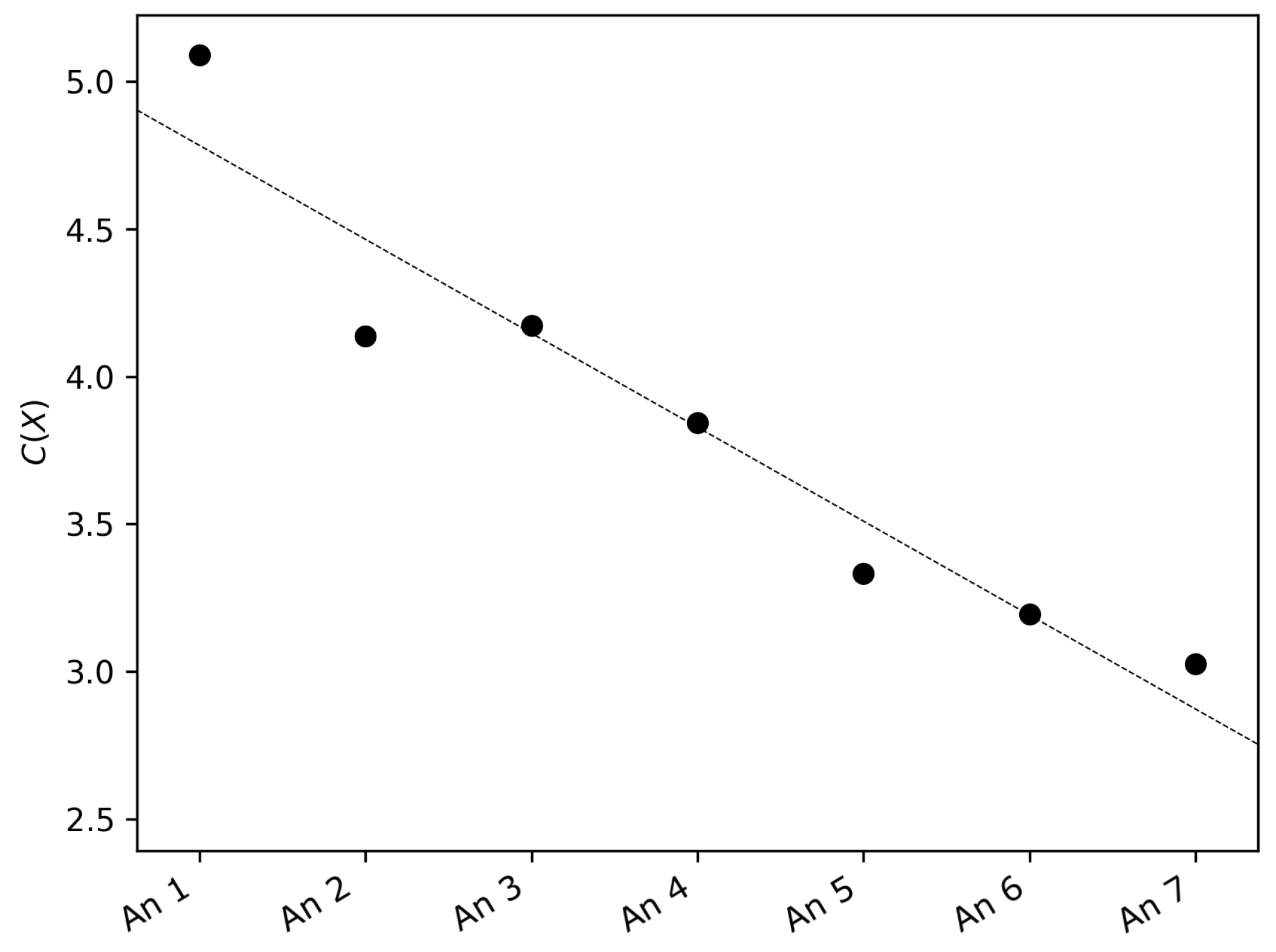
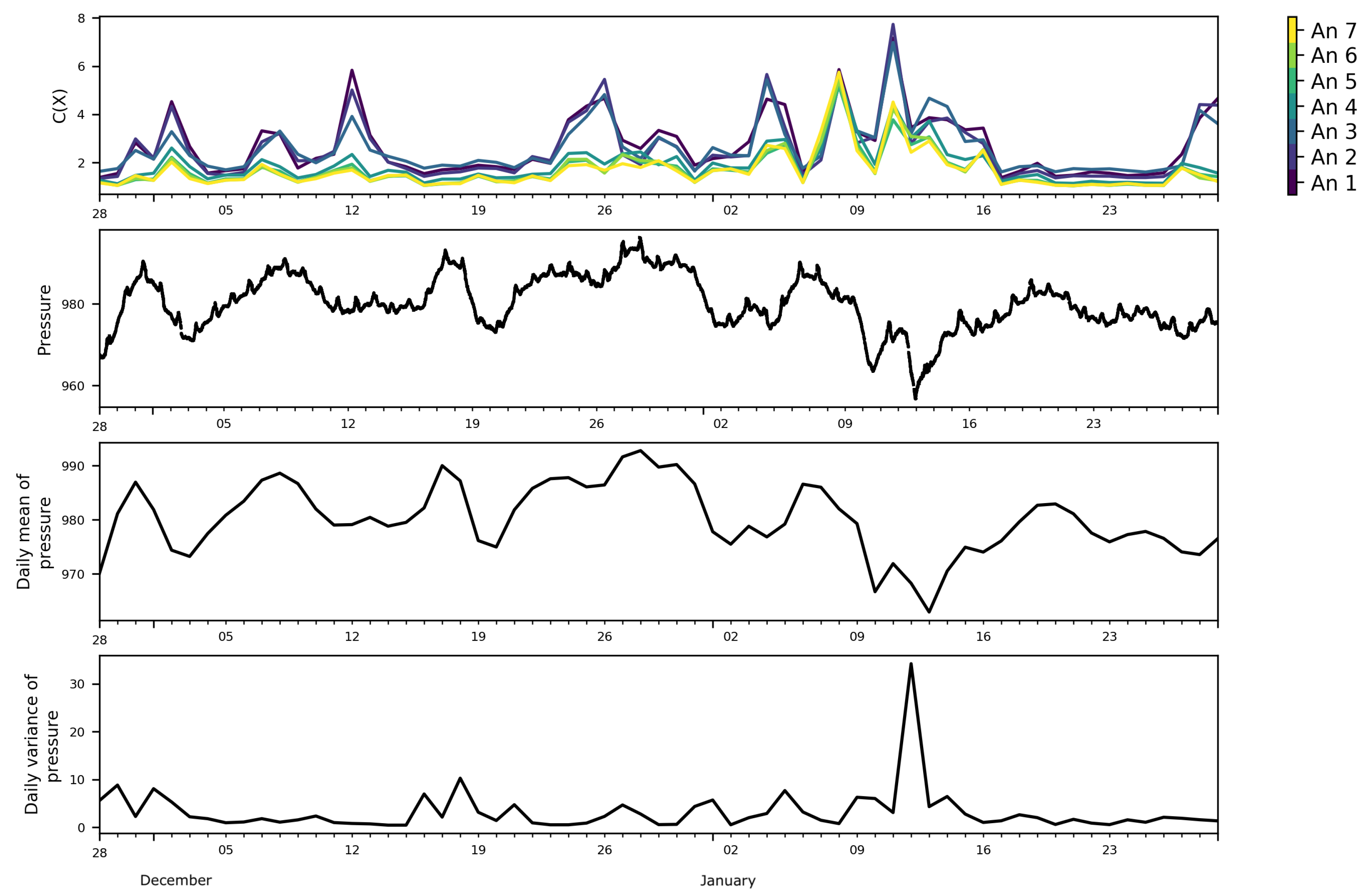
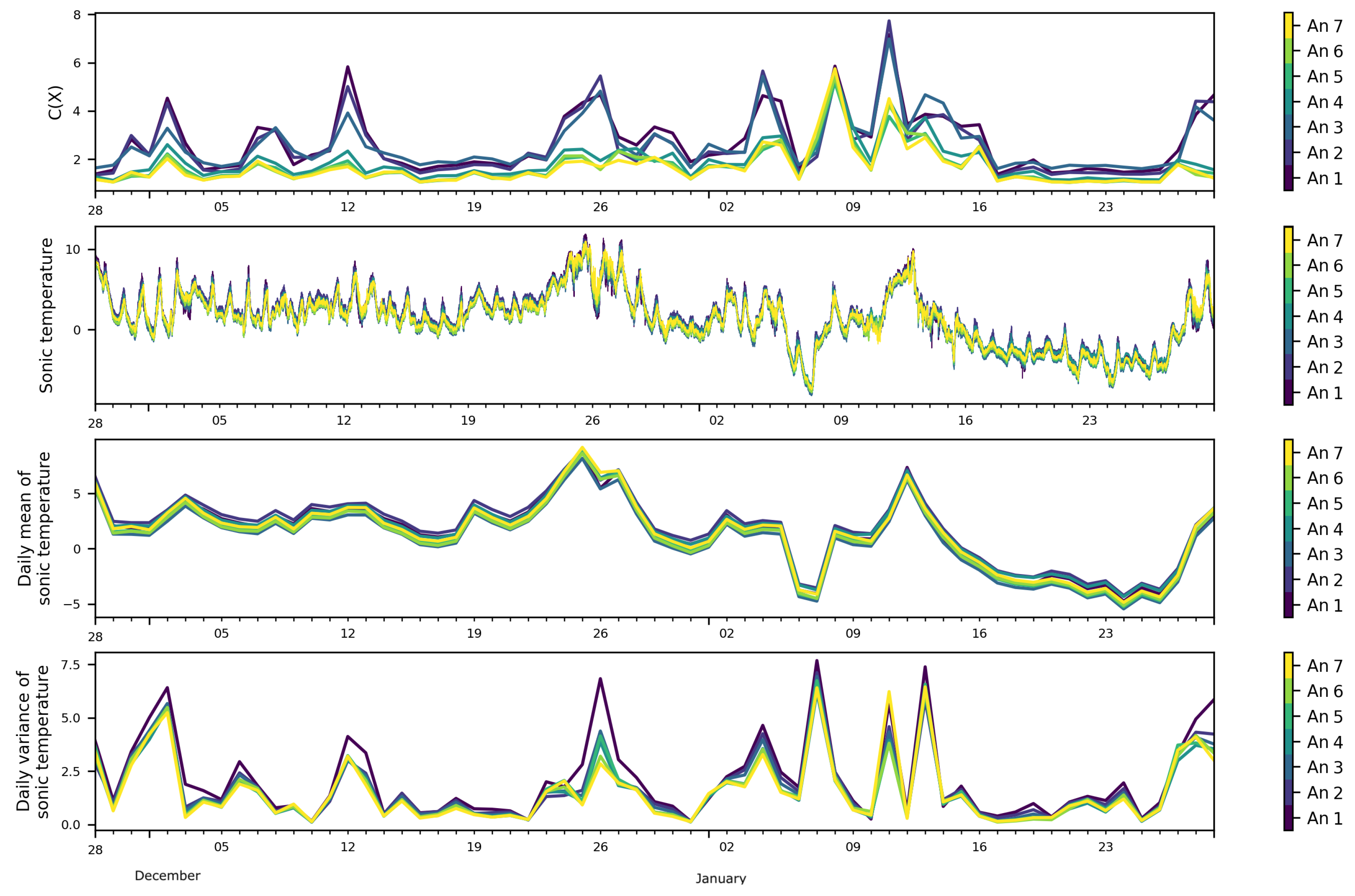

| An 1 | An 2 | An 3 | An 4 | An 5 | An 6 | An 7 | |
|---|---|---|---|---|---|---|---|
| Height (m) | 1.5 | 5.5 | 9.5 | 13.5 | 17.5 | 21.5 | 25.5 |
| Min. | 0.000 | 0.000 | 0.000 | 0.000 | 0.000 | 0.000 | 0.010 |
| 1st Qu. | 0.278 | 0.351 | 0.481 | 0.920 | 1.173 | 1.280 | 1.395 |
| Median | 0.493 | 0.602 | 0.824 | 1.575 | 1.965 | 2.124 | 2.295 |
| Mean | 0.606 | 0.721 | 1.009 | 1.932 | 2.388 | 2.574 | 2.756 |
| 3rd Qu. | 0.812 | 0.955 | 1.324 | 2.603 | 3.200 | 3.435 | 3.661 |
| Max. | 7.774 | 12.254 | 14.659 | 18.583 | 20.397 | 21.611 | 23.010 |
| An 1 | An 2 | An 3 | An 4 | An 5 | An 6 | An 7 | |
|---|---|---|---|---|---|---|---|
| b | 0.0075 | 0.0097 | 0.0138 | 0.0270 | 0.0347 | 0.0372 | 0.0404 |
| Correlation | p-Value | |
|---|---|---|
| An 1 | 0.562 | 0.001 |
| An 2 | 0.550 | 0.001 |
| An 3 | 0.500 | 0.001 |
| An 4 | 0.426 | 0.002 |
| An 5 | 0.394 | 0.002 |
| An 6 | 0.382 | 0.006 |
| An 7 | 0.482 | 0.001 |
© 2019 by the authors. Licensee MDPI, Basel, Switzerland. This article is an open access article distributed under the terms and conditions of the Creative Commons Attribution (CC BY) license (http://creativecommons.org/licenses/by/4.0/).
Share and Cite
Guignard, F.; Mauree, D.; Lovallo, M.; Kanevski, M.; Telesca, L. Fisher–Shannon Complexity Analysis of High-Frequency Urban Wind Speed Time Series. Entropy 2019, 21, 47. https://doi.org/10.3390/e21010047
Guignard F, Mauree D, Lovallo M, Kanevski M, Telesca L. Fisher–Shannon Complexity Analysis of High-Frequency Urban Wind Speed Time Series. Entropy. 2019; 21(1):47. https://doi.org/10.3390/e21010047
Chicago/Turabian StyleGuignard, Fabian, Dasaraden Mauree, Michele Lovallo, Mikhail Kanevski, and Luciano Telesca. 2019. "Fisher–Shannon Complexity Analysis of High-Frequency Urban Wind Speed Time Series" Entropy 21, no. 1: 47. https://doi.org/10.3390/e21010047
APA StyleGuignard, F., Mauree, D., Lovallo, M., Kanevski, M., & Telesca, L. (2019). Fisher–Shannon Complexity Analysis of High-Frequency Urban Wind Speed Time Series. Entropy, 21(1), 47. https://doi.org/10.3390/e21010047






